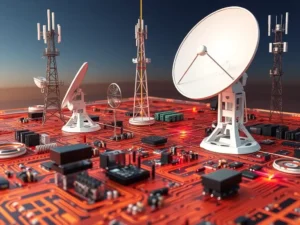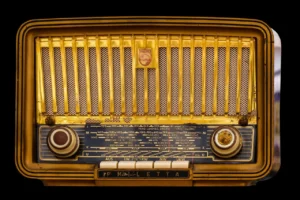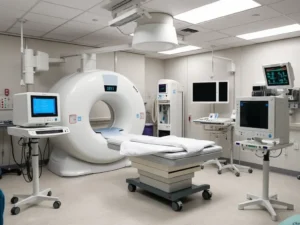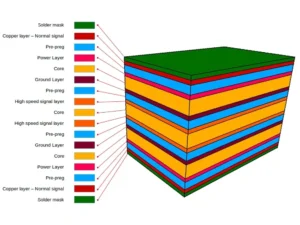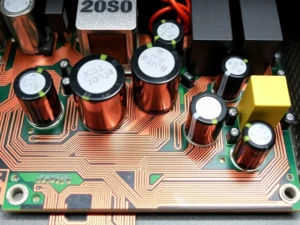In today’s world, we can’t even move without electronics. To find people, we need phones. We need ovens to warm foods. To do office work, we need calculators and computers. To keep our house warm, we need thermostats and air-conditioners. Like this, we are familiar with millions of electronics daily. That is why “Electron Devices and Circuits” is a critical topic.
Electron Devices and Circuits are especially critical in manufacturing. If you know the basics of technology, you can better understand how things are made. This knowledge can guide you in manufacturing, from design to final production. However, the design guide ensures that your electronic device is efficient and safe.
You might have a business idea that may help you be successful in your target area. You only need a reliable production facility to make your dream come true. All you need is some basic knowledge about electron devices and circuits. If it is correct, then this article is for you.
This article is all about electronic circuits. Rather than talking about theories, we’ll explain each part from a business point of view. This article will explore various topics related to electron devices and circuits. You’ll mainly learn how they work, their different kinds, and their uses in multiple industries. We hope you will be ready to begin your project by the end.
Overview of Electron Devices and Circuits
The term electronics means controlling electric energy. From the name, you can realize that electron devices and circuits combine two parts. First, electron devices, and second, the circuits.
Electron devices are the separate components used on a circuit. You might have heard about transistors, capacitors, resistors, and diodes. You will learn more about it later.
In contrast, circuits have different purposes than electric devices. They connect the various parts of an electronic gadget, like a road map. What kind of circuit board is used depends on how complicated the device is.
Where would we be without electronics? People on earth today mainly depend on them. Every work in our daily lives needs electronics. So, you can see that electron devices and circuits are the hidden hands of these works. Because of this, the demand for this market is vast. According to the 2024 statistics report, this market has grown over $950 billion.
Why should you care about electronics and circuitry? The best answer is the growing demand for technology. We need fast and reliable work, and electronics make that possible. In our world today, electronics power industries help in finding innovation. From security tools to defense systems, everything depends on electronics.
What is an Electronic Device?
People often make mistakes when understanding electrical devices and electronic devices. If you observe their functionality, you will find they are different. Most electrical gadgets change electricity into other types of energy. On the other hand, the electronic device has a lot more than just converting energy.
There are many examples of electrical devices around you. Typical examples are the light bulb in your room, the fan, the heater, or the stove in the kitchen. Electrical devices typically draw power directly into other forms of energy. In contrast, electronic devices can adjust the functionalities of these electrical devices.
So, you can understand an electronic device part by part when defining it. First, it is a machine or gadget. Second, it uses electronic components to control electrical signals. Third, each electronic device has unique tasks to accomplish. If you think of all the electronic devices, you will find they serve some common purposes.
- Electronic devices process information. Computers and smartphones use chips to measure, examine, and organize data.
- Electron devices and circuits are used to communicate. They make it easy and possible to talk to people far away.
- Entertainment is a part of our daily lives. We play video games, watch movies, or listen to music. These activities are all part of electronic devices and circuits.
- Electron devices and circuits control and automate industrial, home, and vehicle processes. Electronic systems in modern cars ensure their safety and work well. This can also be seen in robot hands, combining solar generators, robots, and more.
Types of Electronic Devices
Electronics and circuitry are not limited to specific works. They offer many functions which help in our everyday work. Typically, each function requires different types of electronic devices. Some increase the signal, while others reduce it. Some store data, while others do the math. Each type has unique electronics and circuitry functions. In general, you will find four main categories.
| Types of Electronic Devices | Examples |
| Active Devices | Transistors, diodes, integrated circuits (ICs) |
| Passive Devices | Resistors, capacitors, inductors, varistors |
| Electromechanical Devices | Relays, hard disk drives (HDDs), servo motors, printers |
| Semiconductor Devices | LEDs, MOSFETs, thyristors |
Active Devices
Active Electronic devices are the primary components of a circuit board. They are directly connected to an external power source. What it does is manage the flow of electrons in a circuit. Which devices are active electronic devices? Check out the table above to learn more about different types of electronic devices.
As the name implies, active devices actively participate in electronics. They handle data or improve signals. In this case, consider a speaker system. If you open the speaker box, you will find various electric devices. The transistor is one of the critical components in the speaker system. It mainly boosts the sound output. As a result, you can hear loud music.
Besides, in many digital electronics, ICs are the most crucial component. They process and compute vast amounts of data. Because of this, you can do complex calculations in the blink of an eye.
Passive Devices
Passive devices are different from active devices. They don’t need a power source and don’t control the current; instead, they respond to it. These devices can resist, store, or filter signals. They are crucial for both saving and releasing energy.
You can think of a resistor, the most commonly used component. When you observe a circuit board, you will find many of them. What exactly does it do? It typically limits the flow of electrons through a circuit. In this manner, sensitive components are not stressed. A capacitor is also a great example. It mainly ensures stable power output in a power supply system.
Electromechanical Devices
Electromechanical devices do both electronic/electrical and mechanical work at the same time. In other words, they use electronic signals to make some mechanical parts work. Most people make mistakes when defining an electrical device and an electronic device. Are electromechanical devices electrical devices or electronic devices?
While some electromechanical gadgets are electrical devices, some are not. Fan motors, relays, and light switches are all electrical devices. However, printers, HDDs, robots, drones, and servo motors are electronic devices.
Semiconductor Devices
Semiconductor devices are a type of electronic device. Silicon is the main ingredient used to make them. Under some conditions, they act like conductors; under others, they act like insulators. This particular behavior makes these devices perfect for controlling many electron flow works. This behavior may change under different weather, heat, or magnetic forces.
What is an Electronic Circuit?
You might already be familiar with different types of electrical circuits. Series circuits, parallel circuits, open circuits, short circuits, and many more are there. But have you thought of what an electronic circuit is?
An electronic circuit is a type of pathway. Its main job is to guide current through various components. Different components can do their job when electric current flows through this pathway. So, you can do things like add, subtract, store info, and more.
An electronic circuit generally consists of several sections. Each section serves different purposes. You can classify electronic circuits into wires, electric devices, and protective elements. Once again, electrical circuits and electronic circuits are not the same. Let’s check how they are different.
| Aspect | Electrical Circuit | Electronic Circuit |
| Purpose | Primarily designed to transmit or deliver power | Designed to process, control, or amplify signals |
| Current Type | High currents, mostly AC | Low currents, mostly DC |
| Application | Used in high-power devices like motors, lights, heaters, and appliances | Used in low-power devices like computers, smartphones, audio systems and more |
| Components | The basic components are wires, switches, and resistors | Complex components like transistors, ICs, or capacitors |
| Control and Functionality | Less control, more about power flow | High control over signal modulation and processing |
| Signal process | Does not process signals | Processes signals |
| Power Consumption | Generally high due to power transmission requirements | Generally low, focusing on efficiency and precision |
| Example | Home electrical wiring, power circuits in factories | Circuits in smartphones, computers, and TVs |
Types of Electronics Circuits
Like electrical circuits, electronic circuits have several types. Generally, there are four different types of electronic circuits.
When you consider analog and digital circuits, you will find the pros and cons of each product. On the other hand, hybrid ones can do both works but may produce more heat. If you want to reduce the heat, you must add extra cooling systems, which add more costs. So, you must decide which type is the right for your product. You must balance the cost with performance and demands.
Analog Circuits
Analog circuits are the old-fashioned way to control electronics. They work great with continuous signals. They are mainly suitable for smooth waves flowing from one point to another.
You might already be familiar with a radio with a tuning dial. By rotating the dial, you can listen to different FM shows. Other typical analog devices are amplifiers, analog measuring devices, or oscillators.
Pros
- Analog circuits often come with simpler designs. As a result, these circuits are much cheaper to make.
- Analog circuits are highly suitable for live data processing.
- It offers fewer errors and significantly fewer circuit errors.
Cons
- Signals and noise are more likely to get into analog systems.
- Limited accuracy over long distances
- You may often need to tune these devices for stable performance.
Digital Circuits
Digital circuits function differently than analog circuits. These devices can work with multiple signals at any time. People often utilize these circuits in high-frequency gadgets. These systems connect the contemporary world. They are unimaginably fast, effective, and accurate.
Pros
- Digital Circuits are highly accurate.
- Effective and less affected by noise interference
- These circuits are most suitable for computing, data processing, and storage technologies.
Cons
- Digital circuits come with very complex designs and layouts. Based on the complexity, you can find 2-10 and even more layers.
- The cost of making digital circuits is much higher than analog ones.
Mixed-signal Circuits
As their name implies, these circuits usually mix analog and digital circuits. They can perform both types of work. Analog-to-digital and digital-to-analog conversion is seen in hybrid electronics equipment.
Pros
- These circuits combine analog and digital circuits. This means you can get versatile solutions from them.
- These circuits can interact with both continuous and digital signals.
- These circuits are best suited for high-frequency devices.
Cons
- Design is more complex and challenging
- Generally more expensive to produce
Power Circuits
Power circuits are used to power things like chargers or power supply devices. They manage and convert source power to usable power. They always work in the background. These circuits control the energy so that all your electronics get the necessary power. Overall, they make your device work better and keep you safe.
Pros
- Power circuits are specially built for power conversion. Most modern power circuits have advanced power management systems.
- The primary use of these circuits is to provide your device with a constant source of electricity.
- Power circuits help you have a stable and long-lasting device.
Cons
- It may generate heat. So, you must pay attention to cooling strategies.
- Power circuits are usually heavy.
Designing Electronics Circuits for Production
Designing your Electron Devices and Circuits is the most critical part of your journey. You may think of a product but don’t know how to make it. Or, you know how to design but want to know how it works in real-world manufacturing. The following seven pointers are the critical steps in manufacturing electron devices and circuits.
Step #1 Project needs and specifications
Before anything else, you must develop your idea and your product needs. What should the circuit do? Is it controlling a light, powering a motor, or sensing things?
Step #2 Specifying Block Diagrams
It’s time for professional work once you have collected all the requirements and specifications. Create a block diagram showing the major components and how they will interact. Each block represents a key function for your electronic device.
Step #3 Schematic Design
Next, draw the circuit. This is where everything starts to fit together. This can be done with several different programs. Lay out each part and link it carefully. Label the parts with names and numbers, such as resistors, capacitors, and transistors.
Step #4 Select electron devices and circuits
Once your schematic is ready, it’s time to choose the proper electron devices and circuits. What type of electronic devices do you need? Which type of capacitor? Selecting the appropriate electron devices and circuits is very important here. You can look at availability, cost, price, and lifespan. If some parts are missing, you can find other options.
Step #5 Design your PCB
Now that you have your plan, you can start making the PCB. Think of PCB design as making the shape of the circuit. You must focus on correctly placing the components. It is necessary to manage heat and save space. The design plays a crucial role in saving investment.
Step #6 Prototyping
Once your design is ready, you can make your prototypes. In factories, experts do some simulation and testing before making the prototypes. This ensures that your design is OK for final production.
Step #7 Testing and Proceed for final production
Once your prototype is ready, you must check its performance to see if it meets your project needs. In this case, you can use various types of testing equipment. You can continue with the final production if the prototype passes the test.
You must know an important term here: “rapid prototyping.” It must be enhanced if the prototype fails to go through the testing phases. After updating the design, the prototype is made again. This iterative process is called rapid prototyping.
Testing & Measurement Devices for Electronic Devices
There are various types of testing and measurement devices. Every testing equipment has its unique testing purposes.
- The oscilloscope checks the voltage patterns. You can use it to check signs and fix problems if necessary.
- Multimeters do basic testing jobs, like checking voltage, current, and resistance.
- Function generators make signs that are used to test the reaction of a circuit. You can also use it to calibrate your device.
- Spectrum monitors look at the frequency parts of a signal. This equipment is essential for EMI testing in communication circuits.
- Logic analyzers look at digital signals. You can use this kit to check timing and microcontroller issues.
- Power monitors track how much power is used and how efficiently it is used.
Summary
Electron devices and circuits are the building blocks of electronic systems. It consists of several vital components, which you can classify into two groups: electronic devices and circuits. Electronic devices are the components used on a circuit board. On the other hand, electronic circuits are the main PCB.
Knowing about these is essential in real-world production. Quality design and testing always ensure reliable and high-performance products. If you aim to create high-quality electron devices and circuits, contact UETPCB. We offer complete services, from design to testing and production. Contact us for more information.

